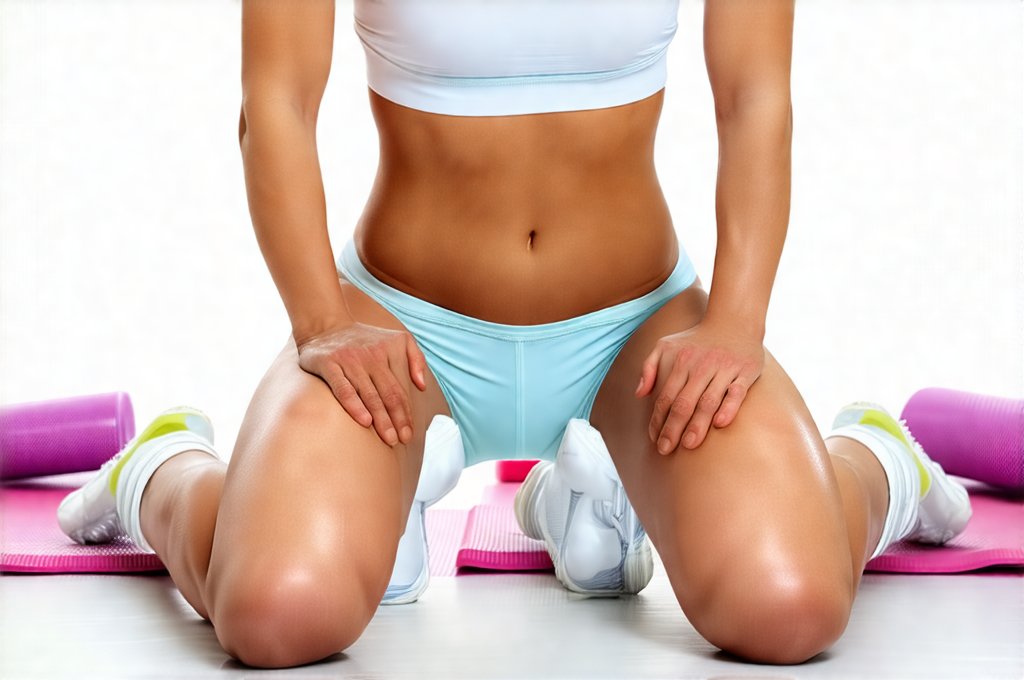Urinary tract infections (UTIs) are incredibly common, particularly among women, and can range from mildly annoying to downright debilitating. When faced with symptoms like frequent urination, burning sensations, and pelvic discomfort, the last thing on most people’s minds is exercise. However, life doesn’t simply stop when illness strikes, and many individuals understandably wonder whether it’s safe – or even helpful – to maintain some level of physical activity while battling a UTI. The question isn’t always straightforward; it depends heavily on the severity of the infection, individual symptoms, and overall health status. Ignoring your body’s signals is never wise, but completely halting all movement might not always be the answer either.
This article will delve into the complexities of exercising with a UTI, exploring what’s generally recommended (and cautioned against) based on current understanding. It’s crucial to remember that this information isn’t a substitute for professional medical advice; if you suspect you have a UTI, seeing a healthcare provider is paramount for proper diagnosis and treatment. We’ll aim to provide clarity on how to navigate physical activity while prioritizing your well-being during an uncomfortable time, offering insights into adapting exercise routines and recognizing when rest is the most appropriate course of action.
Understanding UTIs & Their Impact on Exercise
A UTI occurs when bacteria—most commonly E. coli—enters the urinary tract and causes infection. These infections can affect different parts of the urinary system: the bladder (cystitis), urethra (urethritis), or kidneys (pyelonephritis). The severity varies significantly; a mild bladder infection might cause discomfort, while a kidney infection is much more serious and requires immediate medical attention. Symptoms often include a burning sensation during urination, frequent urge to urinate, cloudy urine, pelvic pain (in women), and rectal pain (in men). Some people also experience fatigue and general malaise. These symptoms themselves can directly impact someone’s ability to engage in physical activity.
The discomfort associated with UTIs can make even gentle exercise challenging. For example, the jarring motions of running or jumping can exacerbate bladder irritation, making urination more painful. Similarly, strenuous abdominal work might increase pressure on the urinary tract, potentially worsening symptoms. Moreover, a UTI can lead to dehydration if fluid intake isn’t sufficient, which further compromises performance and recovery. It’s vital to acknowledge that each individual experiences UTIs differently; what one person can tolerate another may find impossible. Therefore, self-assessment is key.
Finally, it’s important to understand the potential risks of delaying treatment or pushing your body too hard while infected. In rare cases, an untreated UTI can lead to kidney damage. Exercising vigorously when feeling unwell could potentially weaken the immune system and hinder the body’s natural ability to fight off infection. This is why consulting a doctor before continuing any exercise routine during a suspected UTI is strongly advised. If you are concerned about other urological issues, consider whether you should test for STIs alongside your UTI testing.
Navigating Exercise Options During a UTI
Generally speaking, low-impact activities are more suitable when dealing with a UTI. Walking, gentle yoga, or light stretching can help maintain some level of physical activity without significantly exacerbating symptoms. The key is to listen to your body and adjust the intensity accordingly. If you notice any increase in pain or discomfort during exercise, stop immediately. Avoid high-impact exercises like running, jumping jacks, or vigorous dance routines. These activities put excessive stress on the bladder and pelvic region.
Hydration is also crucial. Drinking plenty of water helps flush out bacteria from the urinary tract and reduces irritation. It’s important to increase fluid intake before, during, and after any physical activity. Also, avoid caffeinated beverages or alcohol, as these can further irritate the bladder. Consider wearing breathable underwear made from cotton to minimize moisture and friction in the genital area. This helps create a less hospitable environment for bacteria. Lastly, be mindful of your clothing; loose-fitting garments are preferable to tight ones, promoting better airflow and reducing pressure on the urinary tract.
If you’re taking antibiotics for a UTI, it’s even more important to prioritize rest and recovery. Antibiotics can sometimes cause side effects like nausea or fatigue, which can further impact your ability to exercise effectively. Don’t attempt to “sweat out” an infection; this is not only ineffective but could also be harmful. Instead, focus on gentle movement and hydration while allowing the medication to do its job. If you have concerns about activity levels during other conditions like prostatitis, consider whether you can exercise during a flare up.
Recognizing When To Rest & Seek Medical Attention
It’s essential to distinguish between mild discomfort that can be managed with adjustments and symptoms that signal a more serious problem. If you experience any of the following, immediately cease exercise and consult your doctor:
- Fever or chills: This could indicate that the infection has spread to your kidneys.
- Back pain or flank pain: These are also signs of a potential kidney infection.
- Nausea or vomiting: Could be a side effect of antibiotics, but also a sign of a worsening UTI.
- Significant increase in pain during urination: Indicates the infection is not responding to treatment.
- Blood in your urine: A concerning symptom that requires immediate medical attention.
Even without these severe symptoms, if you feel overwhelmingly fatigued or weak, rest is paramount. Pushing yourself when your body is already under stress can prolong recovery and potentially lead to complications. Remember, prioritizing rest isn’t a sign of weakness; it’s a proactive step towards healing. Don’t hesitate to modify your exercise routine or take a complete break until you feel better.
Adapting Your Routine: Gentle Movement Options
When navigating UTIs and wanting to stay active, gentle movement is often the best approach. Here are some options to consider:
- Walking: A low-impact activity that can help maintain cardiovascular health without putting excessive stress on the bladder. Start with short walks at a comfortable pace and gradually increase duration as tolerated.
- Yoga (gentle forms): Certain yoga poses can promote relaxation and reduce stress, which can indirectly support immune function. Avoid poses that put pressure on the abdomen or pelvic floor. Restorative yoga is an excellent choice.
- Stretching: Gentle stretching can help relieve muscle tension and improve flexibility without exacerbating UTI symptoms. Focus on stretches that don’t involve significant abdominal engagement.
- Pilates (modified): Pilates focuses on core strength, but certain exercises can put pressure on the bladder. Modify exercises to avoid excessive abdominal contraction or impact.
Hydration & Supportive Measures During Activity
Staying adequately hydrated is arguably the most important aspect of managing UTIs and supporting physical activity. Aim for at least eight glasses of water per day, and increase your intake before, during, and after exercise. Consider carrying a reusable water bottle with you as a constant reminder to stay hydrated. Beyond water, certain foods can also contribute to hydration and urinary tract health:
- Cranberry juice (unsweetened): While the evidence is mixed, some studies suggest that cranberry juice may help prevent bacteria from adhering to the urinary tract walls. Avoid sweetened varieties, as sugar can promote bacterial growth.
- Watermelon: This fruit is naturally hydrating and contains vitamins and antioxidants.
- Cucumber: Another highly hydrating food with a mild flavor.
Additionally, practice good hygiene habits to minimize the risk of re-infection. Wipe from front to back after using the toilet, urinate immediately after intercourse, and avoid harsh soaps or douches that can disrupt the natural balance of bacteria in the urinary tract. These simple steps can contribute significantly to long-term urinary health. If you are concerned about your hydration levels during illness, consider whether you can drink electrolytes while also battling a UTI.
Disclaimer: This article provides general information about UTIs and exercise and should not be considered medical advice. Always consult with a healthcare professional for personalized guidance and treatment options. If you suspect you have a UTI, seek prompt medical attention. Can you exercise before a urinalysis?





















